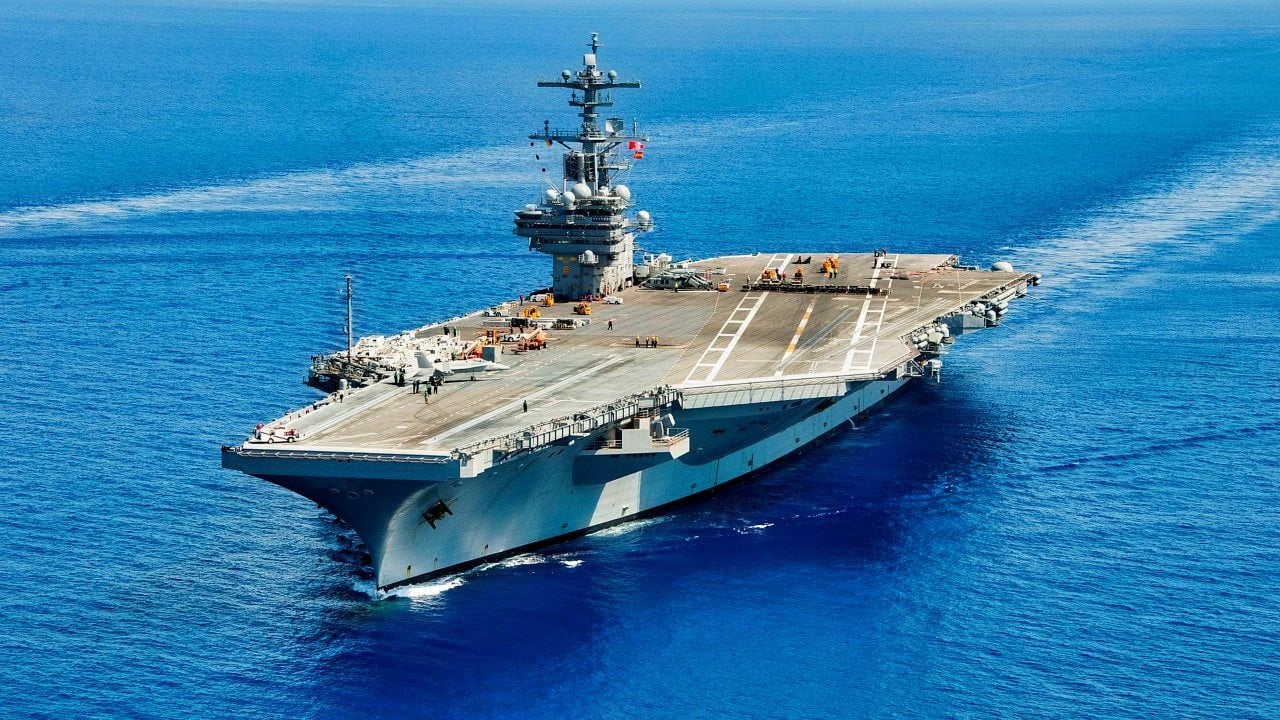Ball of Fire: How the U.S. Navy's Aircraft Carrier Age Could End in a Bang
Despite the United States Navy's commanding fleet of advanced aircraft carriers, including ten Nimitz-class and one Gerald R. Ford-class, these vital assets remain vulnerable to various forms of attack.
Summary: Despite the United States Navy's commanding fleet of advanced aircraft carriers, including ten Nimitz-class and one Gerald R. Ford-class, these vital assets remain vulnerable to various forms of attack.
-Historical precedents during World War II demonstrated that carriers could be sunk by gunfire, submarines, and air strikes. Modern carriers are equipped with sophisticated countermeasures, yet the intrinsic challenge remains: defensive systems must succeed every time, whereas an attacker only needs to succeed once. Critics like former Secretary of Defense Robert M. Gates have questioned the necessity of maintaining such a large fleet given the U.S.'s already significant maritime superiority and the evolving capabilities of potential adversaries like China and Russia.
-These nations possess advanced anti-ship missiles, stealthy submarines, and other asymmetric assets like UUVs and UAVs that could potentially overwhelm a carrier's defenses. This ongoing vulnerability raises questions about the strategic direction and allocation of resources in maintaining and expanding the U.S. carrier fleet amidst growing sophisticated threats.
U.S. Aircraft Carriers: Powerful Yet Prone to Emerging Threats
The United States Navy operates the largest fleet of aircraft carriers in the world. Ten of these platforms belong to the Nimitz-class while one is of the newer Gerald R. Ford-class. Regardless of their class or sophistication, US carriers are vulnerable to a variety of methods of attack by enemy forces.
These attack methods range from gunfire to submarine attack to air attack. In fact, past US carriers have been sunk by all three ways in combat during the Second World War.
Sure, the newer carriers in America’s fleet today employ countermeasures that the old World War II flattops could never have even imagined. But the fact remains that even the greatest countermeasures in the world are fallible. The carrier defenses have to get everything right all the time. A force attacking an American carrier must only get things right once.
Despite the fact that no other nation on Earth has—or will have—a carrier force as large as America’s (or as sophisticated), Washington insists on funding the construction of more of these costly and vulnerable systems. This was something that former Secretary of Defense Robert M. Gates opposed.
As Gates said, “Consider the massive overmatch the U.S. already enjoys. Consider, too, the growing anti-ship capabilities of adversaries. Do we really need eleven carrier strike groups for another 30 years when no other country has more than one? Any future plans must address this.”
China Becoming a Dominant Player in the Region
Well, China has more than one. Nevertheless, the idea that China’s fleet of conventionally-powered carriers are a true threat to America’s nuclear-powered supercarriers is a bit laughable. The real threat to US carriers comes in the form of several unconventional threats from nations, like China, that are threatened by America’s naval dominance.
A rival nation, such as China, can deploy just shy of 1,500 missiles designed to critically damage or destroy an American aircraft carrier. Meanwhile, China has proven time-and-again that their older, diesel-fueled submarines can get within firing range of nuclear-powered American carriers. These Chinese submarines could easily pop off a torpedo and sink a carrier.
Remember, the Swedish Gotland-class and French Navy Rubis-class both sank US nuclear aircraft carriers in wargames.
The Russian Navy, like the Chinese navy, has been practicing for years about how to sink an American aircraft carriers. One solution was to build the P-700 Granit supersonic missile. These missiles are often launched in a group of four or eight. These missiles form a network, according to Jalopnik, and “decide amongst themselves which missile will prioritize the main target (like a carrier).” The P-700 has missiles that weigh approximately 15,400 pounds. They can travel up to Mach 1.6 and go for range of 388 miles.
The P-700 Granit can also be fired in a nuclear weapons variant.
And let’s not forget the newly minted unmanned underwater vehicles (UUV) and what unmanned aerial vehicles (UAV) can do. Increasingly automated and relatively cheap to mass produce, these systems can be turned into waves of swarms that overwhelm any onboard ship’s defenses.
The fact is none of America’s aircraft carriers are as invincible as many people assume them to be. They are quite vulnerable to some of the systems I listed above. Of course, there are workarounds—patches that would be useful in deterring future aggression against the carriers.
Yet, they refuse to embrace countermeasures, the Navy wants to build aircraft carriers as it there are no real threats out there to them.

About the Author
Brandon J. Weichert, a National Interest national security analyst, is a former Congressional staffer and geopolitical analyst who is a contributor at The Washington Times, the Asia Times, and The-Pipeline. He is the author of Winning Space: How America Remains a Superpower, Biohacked: China’s Race to Control Life, and The Shadow War: Iran’s Quest for Supremacy. His next book, A Disaster of Our Own Making: How the West Lost Ukraine, is due October 22 from Encounter Books. Weichert can be followed via Twitter @WeTheBrandon.


